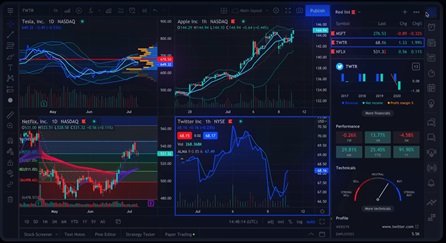Risk management in the finance industry involves identifying, assessing, and minimizing potential losses in trades. Losses can occur when the market moves contrary to our expectations.
Market trends are shaped by trader’s risk sentiment, which can be affected by various factors. When trading options, risk management becomes very crucial. In this article, we will cover top risk management strategies for option trading.
Top 5 Risk Management Strategies for Option Traders
Effective risk management is crucial in options trading for achieving success. Below are some of the most recommended strategies:
1. Diversify Your Portfolio
When you diversify your portfolio, it means that you are distributing the trading into different underlying stocks, sectors, or asset classes to minimize the consequences of one underperforming trade on your overall portfolio.
By not putting all your capital into one or a few options, you mitigate the risk of significant losses if those particular trades decline in value. This approach balances potential profits and losses for a more consistent and robust portfolio that can withstand market fluctuations better.
2. Position Sizing
Position sizing involves allocating only a small portion of your trading capital to each option trade, typically 10-20% of your total capital.
For instance, if you have ₹1,00,000 for trading capital then you can trade with ₹10,000-20,000 per option contract. This will help reduce potential losses and also prevent one trade from affecting your overall portfolio too much.
Through managing position sizes you can maintain better control over your risk exposure and preserve your capital for future opportunities.
3. Technical Analysis for Setting Stop-Loss Orders
For option traders, technical analysis is a useful tool as it enables them to select strike prices that are based on historical price movements and indicators that are more effective. Traders can also utilize technical analysis to identify important support and resistance levels as reference points for setting entry and exit in the market. This ensures that you reduce losses while enhancing your profit potential.
You can find these indicators on any best app for option trading.
4. Implement Hedging
Hedging involves using financial instruments like options to offset potential losses in your primary capital.
For example, if you own a stock, you can buy a put option on the same stock, which gives you the right to sell it at a predetermined price. If the stock’s price falls, the put option increases in value, compensating for the loss in the stock’s value. Similarly, selling call options can generate premium income that can offset potential losses.
Hedging is a way to protect your portfolio from adverse market movements, ensuring that your overall risk is minimized while still allowing for potential gains.
5. Risk-to-Reward Ratio
The risk-to-reward ratio measures the potential gain compared to the potential loss of a trade. A favorable ratio means that the expected reward is significantly higher than the risk.
For example, if you risk ₹100 on a trade but have the potential to earn ₹300, your risk-to-reward ratio is 3:1. Aim for trades where the reward outweighs the risk, as this increases the likelihood of profitability over time.
This strategy helps ensure that even if some trades lose, the gains from successful ones outweigh the losses.
Conclusion
Risk management is important to become a successful options trader. By managing position sizes, using hedging strategies, and continuously monitoring trades, you can protect your capital and improve your chances of long-term success. Learning from your past mistakes can also help you refine your approach and adapt to market changes.
